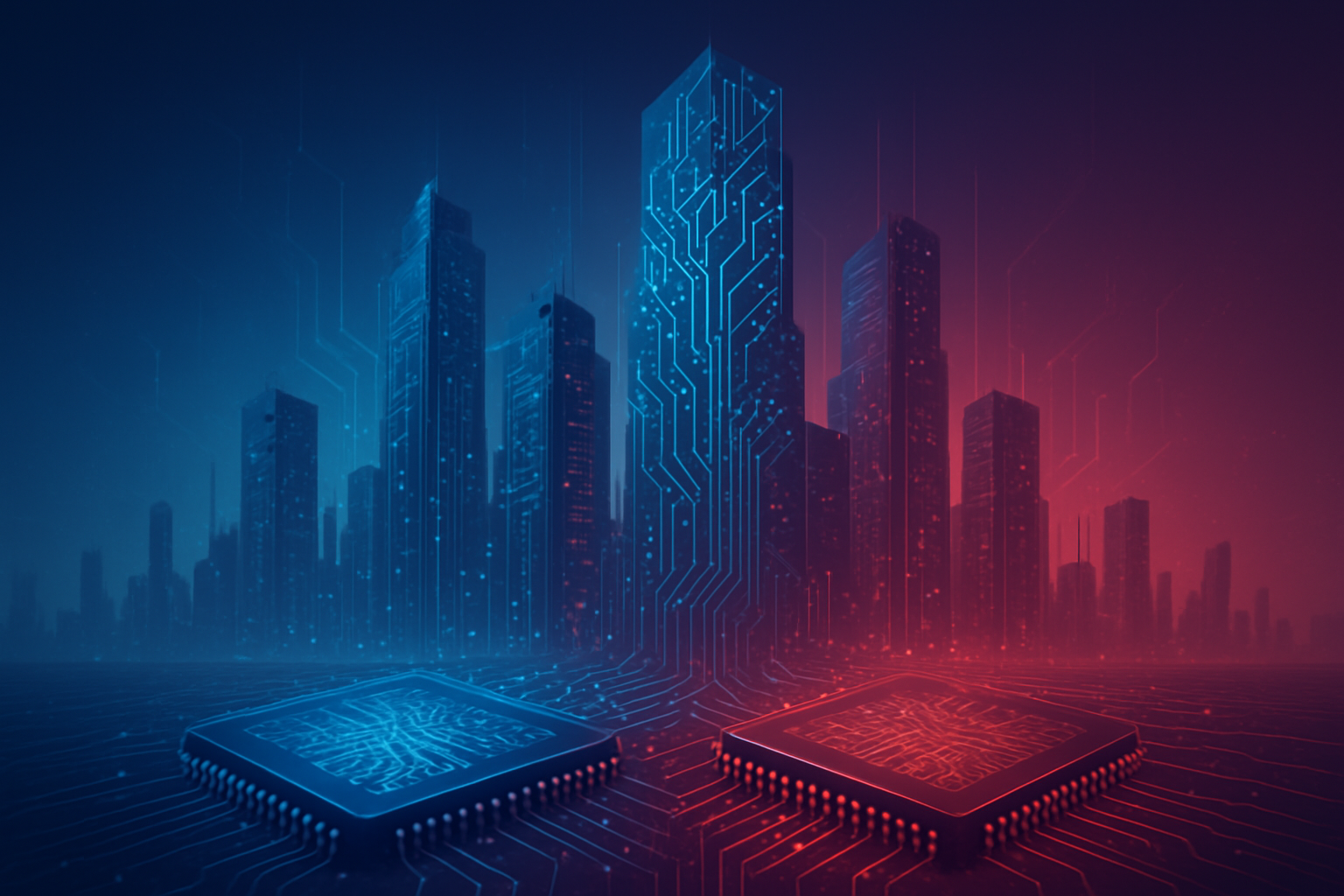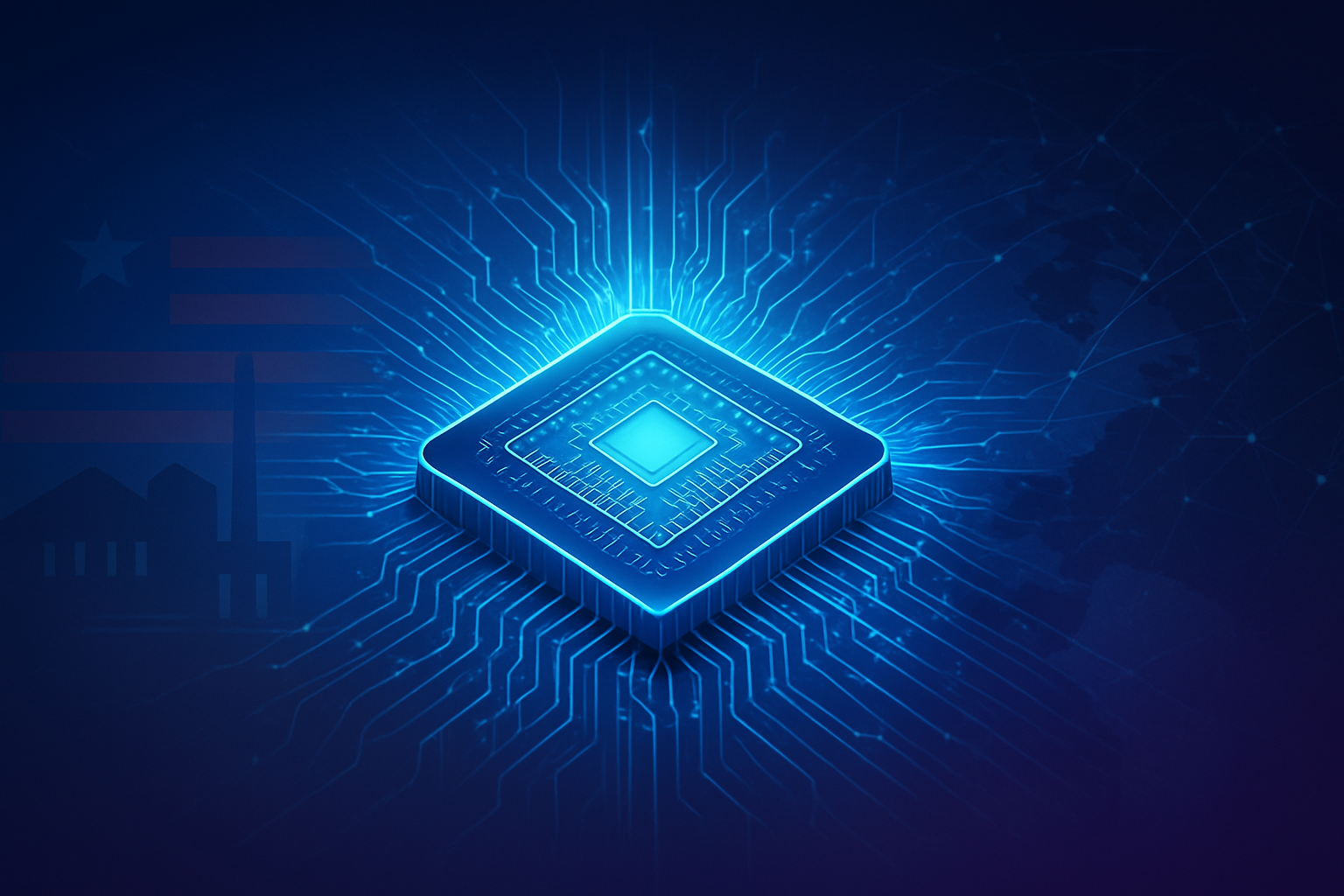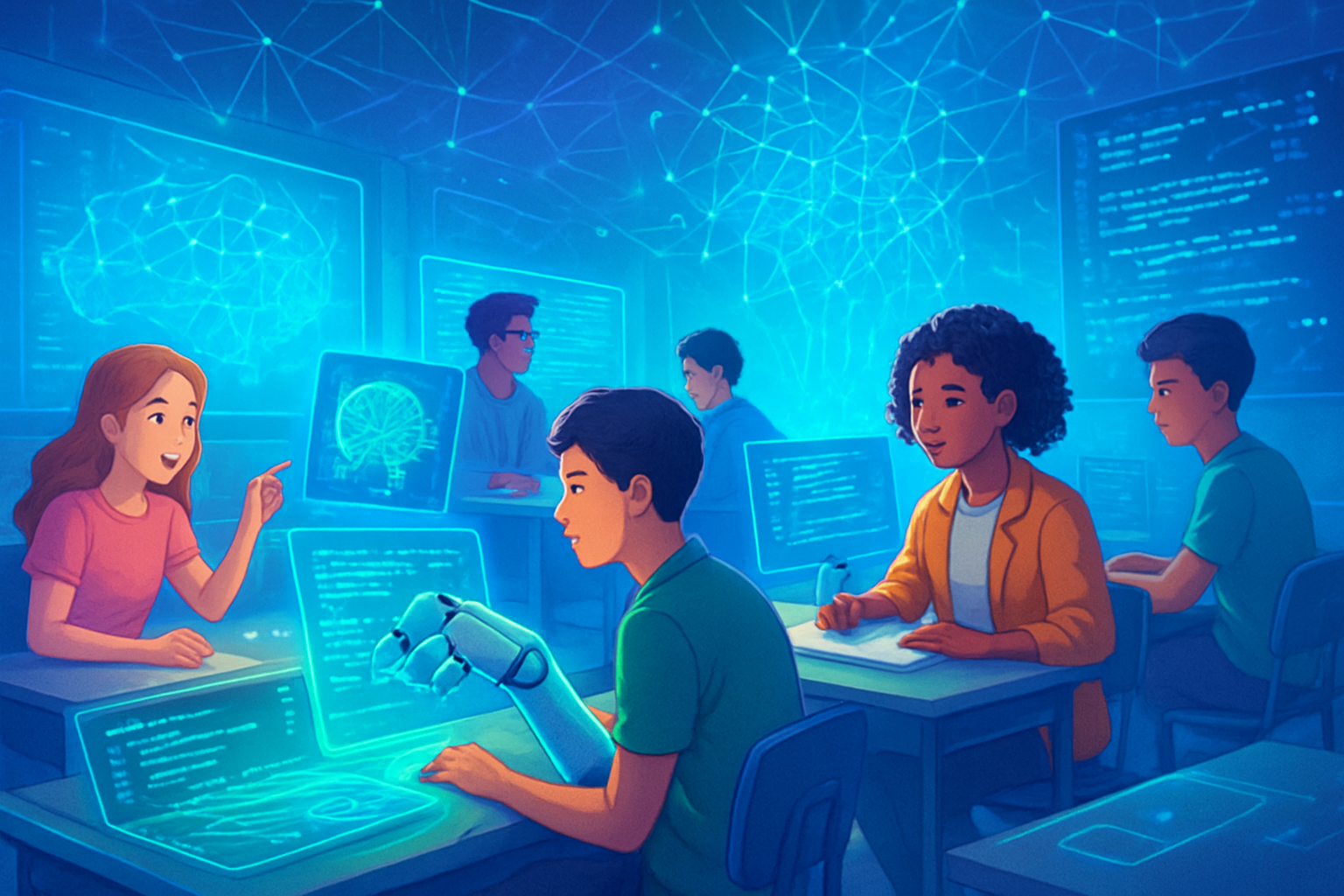DAYTON, OH – November 20, 2025 – In a move set to profoundly shape the future of artificial intelligence, International Business Machines Corporation (NYSE: IBM) and the University of Dayton (UD) have announced a groundbreaking collaboration focused on pioneering next-generation semiconductor research and materials. This strategic partnership, representing a joint investment exceeding $20 million, with IBM contributing over $10 million in state-of-the-art semiconductor equipment, aims to accelerate the development of critical technologies essential for the burgeoning AI era. The initiative will not only push the boundaries of AI hardware, advanced packaging, and photonics but also cultivate a vital skilled workforce to secure the United States' leadership in the global semiconductor industry.
The immediate significance of this alliance is multifold. It underscores a collective recognition that the continued exponential growth and capabilities of AI are increasingly dependent on fundamental advancements in underlying hardware. By establishing a new semiconductor nanofabrication facility at the University of Dayton, slated for completion in early 2027, the collaboration will create a direct "lab-to-fab" pathway, shortening development cycles and fostering an environment where academic innovation meets industrial application. This partnership is poised to establish a new ecosystem for research and development within the Dayton region, with far-reaching implications for both regional economic growth and national technological competitiveness.
Technical Foundations for the AI Revolution
The technical core of the IBM-University of Dayton collaboration delves deep into three critical areas: AI hardware, advanced packaging, and photonics, each designed to overcome the computational and energy bottlenecks currently facing modern AI.
In AI hardware, the research will focus on developing specialized chips—custom AI accelerators and analog AI chips—that are fundamentally more efficient than traditional general-purpose processors for AI workloads. Analog AI chips, in particular, perform computations directly within memory, drastically reducing the need for constant data transfer, a notorious bottleneck in digital systems. This "in-memory computing" approach promises substantial improvements in energy efficiency and speed for deep neural networks. Furthermore, the collaboration will explore new digital AI cores utilizing reduced precision computing to accelerate operations and decrease power consumption, alongside heterogeneous integration to optimize entire AI systems by tightly integrating various components like accelerators, memory, and CPUs.
Advanced packaging is another cornerstone, aiming to push beyond conventional limits by integrating diverse chip types, such as AI accelerators, memory modules, and photonic components, more closely and efficiently. This tight integration is crucial for overcoming the "memory wall" and "power wall" limitations of traditional packaging, leading to superior performance, power efficiency, and reduced form factors. The new nanofabrication facility will be instrumental in rapidly prototyping these advanced device architectures and experimenting with novel materials.
Perhaps most transformative is the research into photonics. Building on IBM's breakthroughs in co-packaged optics (CPO), the collaboration will explore using light (optical connections) for high-speed data transfer within data centers, significantly improving how generative AI models are trained and run. Innovations like polymer optical waveguides (PWG) can boost bandwidth between chips by up to 80 times compared to electrical connections, reducing power consumption by over 5x and extending data center interconnect cable reach. This could accelerate AI model training up to five times faster, potentially shrinking the training time for large language models (LLMs) from months to weeks.
These approaches represent a significant departure from previous technologies by specifically optimizing for the unique demands of AI. Instead of relying on general-purpose CPUs and GPUs, the focus is on AI-optimized silicon that processes tasks with greater efficiency and lower energy. The shift from electrical interconnects to light-based communication fundamentally transforms data transfer, addressing the bandwidth and power limitations of current data centers. Initial reactions from the AI research community and industry experts are overwhelmingly positive, with leaders from both IBM (NYSE: IBM) and the University of Dayton emphasizing the strategic importance of this partnership for driving innovation and cultivating a skilled workforce in the U.S. semiconductor industry.
Reshaping the AI Industry Landscape
This strategic collaboration is poised to send ripples across the AI industry, impacting tech giants, specialized AI companies, and startups alike by fostering innovation, creating new competitive dynamics, and providing a crucial talent pipeline.
International Business Machines Corporation (NYSE: IBM) itself stands to benefit immensely, gaining direct access to cutting-edge research outcomes that will strengthen its hybrid cloud and AI solutions. Its ongoing innovations in AI, quantum computing, and industry-specific cloud offerings will be directly supported by these foundational semiconductor advancements, solidifying its role in bringing together industry and academia.
Major AI chip designers and tech giants like Nvidia Corporation (NASDAQ: NVDA), Advanced Micro Devices, Inc. (NASDAQ: AMD), Intel Corporation (NASDAQ: INTC), Alphabet Inc. (NASDAQ: GOOGL), Microsoft Corporation (NASDAQ: MSFT), and Amazon.com, Inc. (NASDAQ: AMZN) are all in constant pursuit of more powerful and efficient AI accelerators. Advances in AI hardware, advanced packaging (e.g., 2.5D and 3D integration), and photonics will directly enable these companies to design and produce next-generation AI chips, maintaining their competitive edge in a rapidly expanding market. Companies like Nvidia and Broadcom Inc. (NASDAQ: AVGO) are already integrating optical technologies into chip networking, making this research highly relevant.
Foundries and advanced packaging service providers such as Taiwan Semiconductor Manufacturing Company Limited (NYSE: TSM), Samsung Electronics Co., Ltd. (KRX: 005930), Amkor Technology, Inc. (NASDAQ: AMKR), and ASE Technology Holding Co., Ltd. (NYSE: ASX) will also be indispensable beneficiaries. Innovations in advanced packaging techniques will translate into new manufacturing capabilities and increased demand for their specialized services. Furthermore, companies specializing in optical components and silicon photonics, including Broadcom (NASDAQ: AVGO), Intel (NASDAQ: INTC), Lumentum Holdings Inc. (NASDAQ: LITE), and Coherent Corp. (NYSE: COHR), will see increased demand as the need for energy-efficient, high-bandwidth data transfer in AI data centers grows.
For AI startups, while tech giants command vast resources, this collaboration could provide foundational technologies that enable niche AI hardware solutions, potentially disrupting traditional markets. The development of a skilled workforce through the University of Dayton’s programs will also be a boon for startups seeking specialized talent.
The competitive implications are significant. The "lab-to-fab" approach will accelerate the pace of innovation, giving companies faster time-to-market with new AI chips. Enhanced AI hardware can also disrupt traditional cloud-centric AI by enabling powerful capabilities at the edge, reducing latency and enhancing data privacy for industries like autonomous vehicles and IoT. Energy efficiency, driven by advancements in photonics and efficient AI hardware, will become a major competitive differentiator, especially for hyperscale data centers. This partnership also strengthens the U.S. semiconductor industry, mitigating supply chain vulnerabilities and positioning the nation at the forefront of the "more-than-Moore" era, where advanced packaging and new materials drive performance gains.
A Broader Canvas for AI's Future
The IBM-University of Dayton semiconductor research collaboration resonates deeply within the broader AI landscape, aligning with crucial trends, promising significant societal impacts, while also necessitating a mindful approach to potential concerns. This initiative marks a distinct evolution from previous AI milestones, underscoring a critical shift in the AI revolution.
The collaboration is perfectly synchronized with the escalating demand for specialized and more efficient AI hardware. As generative AI and large language models (LLMs) grow in complexity, the need for custom silicon like Neural Processing Units (NPUs) and Tensor Processing Units (TPUs) is paramount. The focus on AI hardware, advanced packaging, and photonics directly addresses this, aiming to deliver greater speed, lower latency, and reduced energy consumption. This push for efficiency is also vital for the growing trend of Edge AI, enabling powerful AI capabilities in devices closer to the data source, such as autonomous vehicles and industrial IoT. Furthermore, the emphasis on workforce development through the new nanofabrication facility directly tackles a critical shortage of skilled professionals in the U.S. semiconductor industry, a foundational requirement for sustained AI innovation. Both IBM (NYSE: IBM) and the University of Dayton are also members of the AI Alliance, further integrating this effort into a broader ecosystem aimed at advancing AI responsibly.
The broader impacts are substantial. By developing next-generation semiconductor technologies, the collaboration can lead to more powerful and capable AI systems across diverse sectors, from healthcare to defense. It significantly strengthens the U.S. semiconductor industry by fostering a new R&D ecosystem in the Dayton, Ohio, region, home to Wright-Patterson Air Force Base. This industry-academia partnership serves as a model for accelerating innovation and bridging the gap between theoretical research and practical application. Economically, it is poised to be a transformative force for the Dayton region, boosting its tech ecosystem and attracting new businesses.
However, such foundational advancements also bring potential concerns. The immense computational power required by advanced AI, even with more efficient hardware, still drives up energy consumption in data centers, necessitating a focus on sustainable practices. The intense geopolitical competition for advanced semiconductor technology, largely concentrated in Asia, underscores the strategic importance of this collaboration in bolstering U.S. capabilities but also highlights ongoing global tensions. More powerful AI hardware can also amplify existing ethical AI concerns, including bias and fairness from training data, challenges in transparency and accountability for complex algorithms, privacy and data security issues with vast datasets, questions of autonomy and control in critical applications, and the potential for misuse in areas like cyberattacks or deepfake generation.
Comparing this to previous AI milestones reveals a crucial distinction. Early AI milestones focused on theoretical foundations and software (e.g., Turing Test, ELIZA). The machine learning and deep learning eras brought algorithmic breakthroughs and impressive task-specific performance (e.g., Deep Blue, ImageNet). The current generative AI era, marked by LLMs like ChatGPT, showcases AI's ability to create and converse. The IBM-University of Dayton collaboration, however, is not an algorithmic breakthrough itself. Instead, it is a critical enabling milestone. It acknowledges that the future of AI is increasingly constrained by hardware. By investing in next-generation semiconductors, advanced packaging, and photonics, this research provides the essential infrastructure—the "muscle" and efficiency—that will allow future AI algorithms to run faster, more efficiently, and at scales previously unimaginable, thus paving the way for the next wave of AI applications and milestones yet to be conceived. This signifies a recognition that hardware innovation is now a primary driver for the next phase of the AI revolution, complementing software advancements.
The Road Ahead: Anticipating AI's Future
The IBM-University of Dayton semiconductor research collaboration is not merely a short-term project; it's a foundational investment designed to yield transformative developments in both the near and long term, shaping the very infrastructure of future AI.
In the near term, the primary focus will be on the establishment and operationalization of the new semiconductor nanofabrication facility at the University of Dayton, expected by early 2027. This state-of-the-art lab will immediately become a hub for intensive research into AI hardware, advanced packaging, and photonics. We can anticipate initial research findings and prototypes emerging from this facility, particularly in areas like specialized AI accelerators and novel packaging techniques that promise to shrink device sizes and boost performance. Crucially, the "lab-to-fab" training model will begin to produce a new cohort of engineers and researchers, directly addressing the critical workforce gap in the U.S. semiconductor industry.
Looking further ahead, the long-term developments are poised to be even more impactful. The sustained research in AI hardware, advanced packaging, and photonics will likely lead to entirely new classes of AI-optimized chips, capable of processing information with unprecedented speed and energy efficiency. These advancements will be critical for scaling up increasingly complex generative AI models and enabling ubiquitous, powerful AI at the edge. Potential applications are vast: from hyper-efficient data centers powering the next generation of cloud AI, to truly autonomous vehicles, advanced medical diagnostics with real-time AI processing, and sophisticated defense technologies leveraging the proximity to Wright-Patterson Air Force Base. The collaboration is expected to solidify the University of Dayton's position as a leading research institution in emerging technologies, fostering a robust regional ecosystem that attracts further investment and talent.
However, several challenges must be navigated. The timely completion and full operationalization of the nanofabrication facility are critical dependencies. Sustained efforts in curriculum integration and ensuring broad student access to these advanced facilities will be key to realizing the workforce development goals. Moreover, maintaining a pipeline of groundbreaking research will require continuous funding, attracting top-tier talent, and adapting swiftly to the ever-evolving semiconductor and AI landscapes.
Experts involved in the collaboration are highly optimistic. University of Dayton President Eric F. Spina declared, "Look out, world, IBM (NYSE: IBM) and UD are working together," underscoring the ambition and potential impact. James Kavanaugh, IBM's Senior Vice President and CFO, emphasized that the collaboration would contribute to "the next wave of chip and hardware breakthroughs that are essential for the AI era," expecting it to "advance computing, AI and quantum as we move forward." Jeff Hoagland, President and CEO of the Dayton Development Coalition, hailed the partnership as a "game-changer for the Dayton region," predicting a boost to the local tech ecosystem. These predictions highlight a consensus that this initiative is a vital step in securing the foundational hardware necessary for the AI revolution.
A New Chapter in AI's Foundation
The IBM-University of Dayton semiconductor research collaboration marks a pivotal moment in the ongoing evolution of artificial intelligence. It represents a deep, strategic investment in the fundamental hardware that underpins all AI advancements, moving beyond purely algorithmic breakthroughs to address the critical physical limitations of current computing.
Key takeaways from this announcement include the significant joint investment exceeding $20 million, the establishment of a state-of-the-art nanofabrication facility by early 2027, and a targeted research focus on AI hardware, advanced packaging, and photonics. Crucially, the partnership is designed to cultivate a skilled workforce through hands-on, "lab-to-fab" training, directly addressing a national imperative in the semiconductor industry. This collaboration deepens an existing relationship between IBM (NYSE: IBM) and the University of Dayton, further integrating their efforts within broader AI initiatives like the AI Alliance.
This development holds immense significance in AI history, shifting the spotlight to the foundational infrastructure necessary for AI's continued exponential growth. It acknowledges that software advancements, while impressive, are increasingly constrained by hardware capabilities. By accelerating the development cycle for new materials and packaging, and by pioneering more efficient AI-optimized chips and light-based data transfer, this collaboration is laying the groundwork for AI systems that are faster, more powerful, and significantly more energy-efficient than anything seen before.
The long-term impact is poised to be transformative. It will establish a robust R&D ecosystem in the Dayton region, contributing to both regional economic growth and national security, especially given its proximity to Wright-Patterson Air Force Base. It will also create a direct and vital pipeline of talent for IBM and the broader semiconductor industry.
In the coming weeks and months, observers should closely watch for progress on the nanofabrication facility's construction and outfitting, including equipment commissioning. Further, monitoring the integration of advanced semiconductor topics into the University of Dayton's curriculum and initial enrollment figures will provide insights into workforce development success. Any announcements of early research outputs in AI hardware, advanced packaging, or photonics will signal the tangible impact of this forward-looking partnership. This collaboration is not just about incremental improvements; it's about building the very bedrock for the next generation of AI, making it a critical development to follow.
This content is intended for informational purposes only and represents analysis of current AI developments.
TokenRing AI delivers enterprise-grade solutions for multi-agent AI workflow orchestration, AI-powered development tools, and seamless remote collaboration platforms.
For more information, visit https://www.tokenring.ai/.









